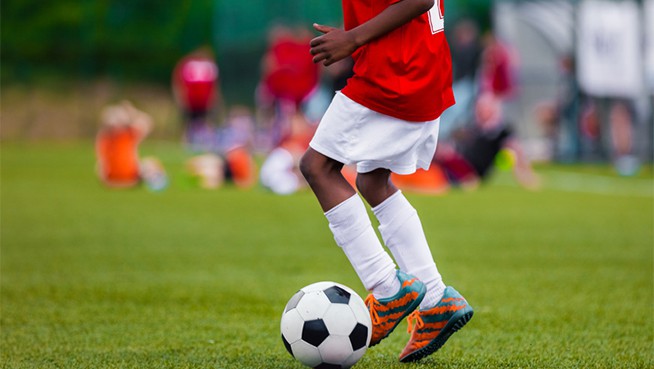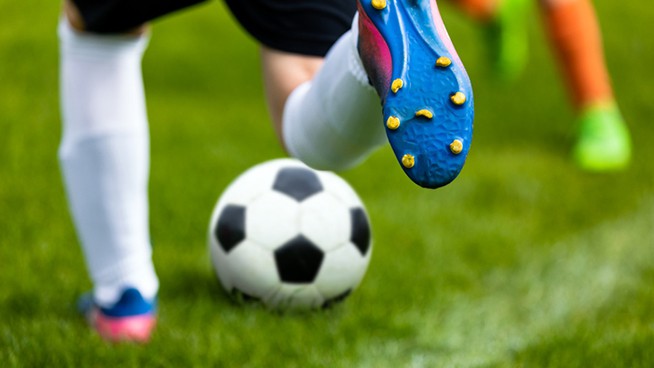3 Secrets of the NBA’s Best Shooters
![]()
When I think about the best shooters in NBA history, I think of Reggie Miller, Dirk Nowitzki, Rick Barry, Ray Allen, Steve Nash and Steph Curry. What they have in common might surprise you. Their success has less to do with shooting mechanics and more with how they approach their craft.
You can boil down their secrets to three simple principles.
Consistency
Consistency means releasing the ball the same way every time. During thousands of hours of practice, great shooters develop habits that give them a consistent shooting motion. Ultimately, consistency is more valuable than perfect shooting technique, because consistency eliminates the extra variables that cause you to miss.
Think about what it’s like to shoot in a game. You already have to deal with distracting variables that interrupt your timing, focus and shooting rhythm. Fatigue, defensive pressure and hostile crowds can cause you to miss shots and lose your rhythm. Having to account for increased variability in your shooting motion adds another potential distraction.
Shooters make shots when they rely on the consistency they have developed in practice; when they have to adjust their technique in the midst of a game, their chances of making shots decreases.
The greats shoot the same shot every time. Their mechanics (even if not technically perfect) are consistent, from their feet to their upper bodies. If they feel something is off, they can easily make minor adjustments, because they’re not doing the extra work of alternating between shooting styles.
Rhythm
The best shooters in the NBA have great rhythm. Steph Curry is perhaps the most stunning contemporary example of shooting rhythm. His jumper starts with his feet and moves to his upper body in one seamless motion. The foundation for his shot starts when his feet act as a springboard for the rest of his shot. The energy he generates from his feet—Curry uses both a two-footed and 1-2 foundation—allows him to generate enough power to get his shot off against more athletic defenders. He always quickly drives his feet into the floor before rising up to release the ball. This highlights the importance of gaining your rhythm from your lower body and allowing that momentum to feed into your shot.
Whether he’s shooting off the dribble or from a standing position, Curry has the rhythm and timing to be a great shooter. His feet start the momentum and he finishes his shot with a high release and a quick flick of the wrist. This allows him to make shots from anywhere on the floor.
Mindset
The best shooters have the ability to block out the negative—like the number of shots they have missed—and focus on making their next shot. This can be difficult if you’ve been hardwired to think more about mistakes than success.
Kobe Bryant personifies this type of mindset. He was recently quoted as saying, “I’d rather go 0 for 30 before I would go 0 for 9; 0 for 9 means you beat yourself, you psyched yourself out of the game.”
Admittedly, Kobe’s shot selection is not always the greatest, and I’m not suggesting you shoot 30 shots when you’re having an off night. But it is a reminder to trust in your training and believe that no matter what, the next shot is going in.
RECOMMENDED FOR YOU
MOST POPULAR
3 Secrets of the NBA’s Best Shooters
![]()
When I think about the best shooters in NBA history, I think of Reggie Miller, Dirk Nowitzki, Rick Barry, Ray Allen, Steve Nash and Steph Curry. What they have in common might surprise you. Their success has less to do with shooting mechanics and more with how they approach their craft.
You can boil down their secrets to three simple principles.
Consistency
Consistency means releasing the ball the same way every time. During thousands of hours of practice, great shooters develop habits that give them a consistent shooting motion. Ultimately, consistency is more valuable than perfect shooting technique, because consistency eliminates the extra variables that cause you to miss.
Think about what it’s like to shoot in a game. You already have to deal with distracting variables that interrupt your timing, focus and shooting rhythm. Fatigue, defensive pressure and hostile crowds can cause you to miss shots and lose your rhythm. Having to account for increased variability in your shooting motion adds another potential distraction.
Shooters make shots when they rely on the consistency they have developed in practice; when they have to adjust their technique in the midst of a game, their chances of making shots decreases.
The greats shoot the same shot every time. Their mechanics (even if not technically perfect) are consistent, from their feet to their upper bodies. If they feel something is off, they can easily make minor adjustments, because they’re not doing the extra work of alternating between shooting styles.
Rhythm
The best shooters in the NBA have great rhythm. Steph Curry is perhaps the most stunning contemporary example of shooting rhythm. His jumper starts with his feet and moves to his upper body in one seamless motion. The foundation for his shot starts when his feet act as a springboard for the rest of his shot. The energy he generates from his feet—Curry uses both a two-footed and 1-2 foundation—allows him to generate enough power to get his shot off against more athletic defenders. He always quickly drives his feet into the floor before rising up to release the ball. This highlights the importance of gaining your rhythm from your lower body and allowing that momentum to feed into your shot.
Whether he’s shooting off the dribble or from a standing position, Curry has the rhythm and timing to be a great shooter. His feet start the momentum and he finishes his shot with a high release and a quick flick of the wrist. This allows him to make shots from anywhere on the floor.
Mindset
The best shooters have the ability to block out the negative—like the number of shots they have missed—and focus on making their next shot. This can be difficult if you’ve been hardwired to think more about mistakes than success.
Kobe Bryant personifies this type of mindset. He was recently quoted as saying, “I’d rather go 0 for 30 before I would go 0 for 9; 0 for 9 means you beat yourself, you psyched yourself out of the game.”
Admittedly, Kobe’s shot selection is not always the greatest, and I’m not suggesting you shoot 30 shots when you’re having an off night. But it is a reminder to trust in your training and believe that no matter what, the next shot is going in.
[cf]skyword_tracking_tag[/cf]









